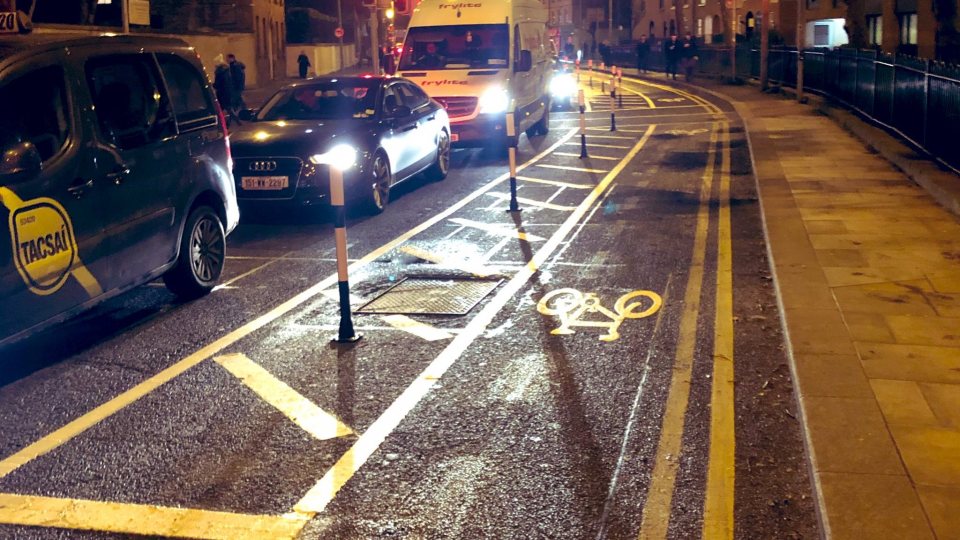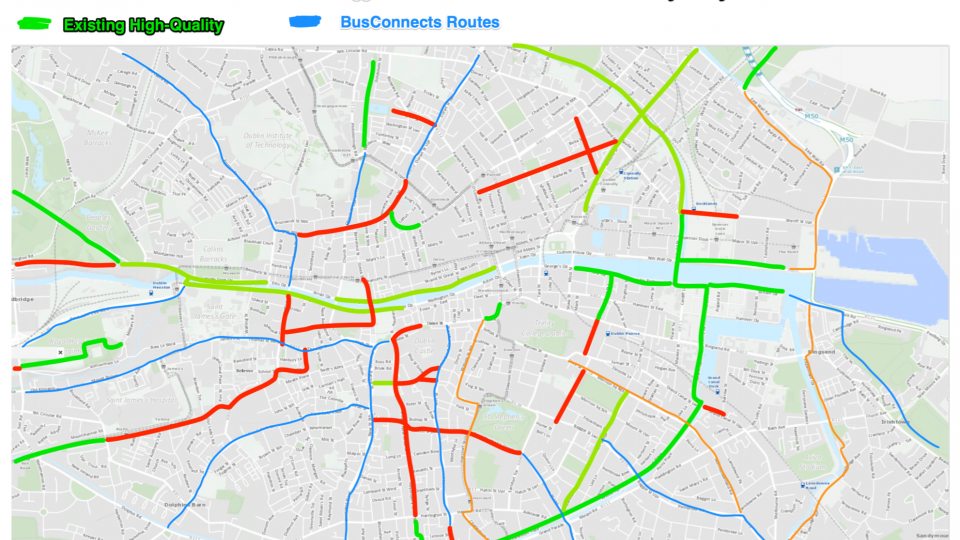Quick Win Suggestions Submitted to Dublin City Council
This week, Dublin Cycling Campaign submitted a list of suggested cycling quick wins to Dublin City Council. These are for temporary safety improvements for cycle lanes protected by orcas and wands.
An example of this type of improvement is the recent change on Kevin Street at the Patrick Street junction. The council removed a second traffic lane to make space for a new cycle lane protected by a row of plastic wands (photo above). This temporary solution has delivered a quick win for a hostile location.
Dublin will be a safer place for people to cycle with more of these changes. The council can quickly roll out these changes across the city because they don’t need planning approval, extensive engineering resources, and are inexpensive.
The Spanish city of Seville used a similar approach to build it’s cycle network within a few years. These improvements increased the number of daily cycling trips in the city from 6,000/day to 70,000/day. That’s a 1,000% increase in cycling trips.
However, there are downsides to this approach. These quick wins are only simple changes. The city council is unlikely to tackle a full junction redesign as that would involve the complexity of a major project. The lack of segregation at bus stops and junctions means these cycle routes will not be safe for people of all ages and abilities.
One of Dublin Cycling Campaign’s core ideas is that we must enable people of all ages and abilities to cycle in Dublin. This requires the highest design standards for cycling infrastructure. A simple rule of thumb is that a cycle route should be safe for children to cycle.
The campaign is pushing for the delivery of major cycle routes that are safe for all. This includes projects such as the Liffey Cycle Route, Royal Canal Greenway, Clontarf to City Centre cycle route, and the 200km of cycle tracks in the BusConnects Core Bus Corridors.
These are major engineering projects that take many years to plan, design, approve, and construct. It is not uncommon for each of these major projects to take 7-10 years to complete. We are tracking all major projects and help move them through the process faster. The new National Cycle Design Office in the National Transport Authority (NTA) should speed up the delivery of major projects.
The cycle network plan for Dublin includes over 1,300km of cycle routes in the four Dublin council areas. There will not be a comprehensive cycling network in Dublin for decades if we rely on major infrastructure projects alone.
In the meantime it is vital that the city council roll out temporary solutions where possible. This will better protect people who are already cycling and encourage some more people to start cycling.
Dublin Cycling Campaign will not stop campaigning until high quality permanent cycle routes are delivered.
Dublin City Council requested suggestions from Dublin Cycling Campaign. The campaign’s infrastructure group compiled an initial list (attached at the end) and submitted it this week. This is not a comprehensive list but the start of a process. The suggestions are focused on building a series of connected cycle routes by:
- Protecting existing mandatory cycle tracks
- Adding protection at pinch points, particularly close to junctions
- New sections that connect to existing high-quality cycle routes in Dublin
- New sections that will form a continuous route of some length
Dublin City Council has welcomed the list and committed to review it over the next month. The council will then see what suggestions they can add to the works programme for this year. Once the council has reviewed this initial list we will seek wider feedback from campaign’s members.
The campaign will encourage Fingal, South Dublin and Dun Laoghaire Rathdown County Councils to consider a similar approach.
Photo credit David Karlstrom
Help us do more for cycling in Dublin by becoming a member!


